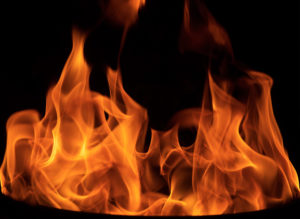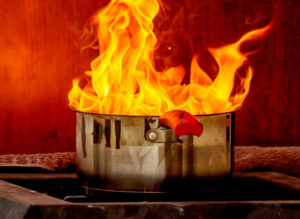 While cooking with grease can enhance the flavor of your food, it also can increase the risk of a kitchen fire. In fact, the National Fire Protection Association (NFPA) notes that cooking fires are the No. 1 cause of fires and fire injuries in the home. According to a recent NFPA report, there are an average of 471 home cooking fires reported every day in the U.S., and that results in 530 deaths, 5,270 injuries and property damage of about $1.1 billion every year.
While cooking with grease can enhance the flavor of your food, it also can increase the risk of a kitchen fire. In fact, the National Fire Protection Association (NFPA) notes that cooking fires are the No. 1 cause of fires and fire injuries in the home. According to a recent NFPA report, there are an average of 471 home cooking fires reported every day in the U.S., and that results in 530 deaths, 5,270 injuries and property damage of about $1.1 billion every year.
To prevent grease fires, it’s important to know how they occur. For starters, leaving an active burner unattended can spell immediate danger. Stepping away from the frying pan, even “for just a minute,” could be all it takes for the grease to get hot enough to start smoking. Within moments, that grease can burst into flames.
Knowing the proper steps of how to put out a grease fire is key to avoiding injury and serious property damage for you and your neighbors. It’s particularly important to know stovetop safety if you live in a multifamily complex, such as senior-living townhomes or apartments: Cooks age 65 and older face a higher risk of fatalities from cooking fires than any other age group, the NFPA reports. Continue Reading
 Knowing how to handle fires in the home is important for every homeowner or tenant. But with so many fires still causing damage, injury and death every year, it’s apparent that more education and better tools are needed to save lives and property.
Knowing how to handle fires in the home is important for every homeowner or tenant. But with so many fires still causing damage, injury and death every year, it’s apparent that more education and better tools are needed to save lives and property.